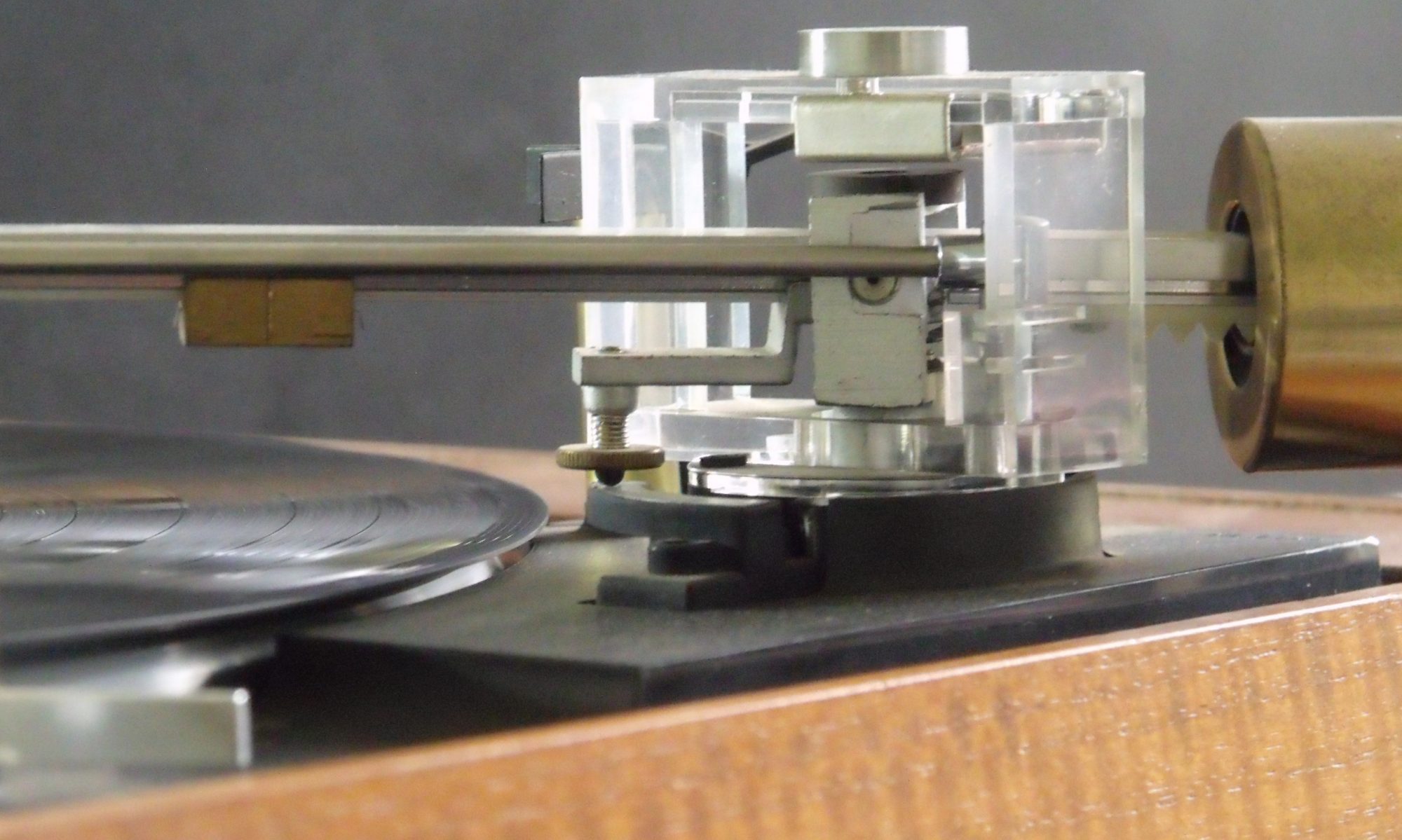I owned one of these magnificent systems. I taught me so much about valve electronics that I nearly ended up working for Quad.
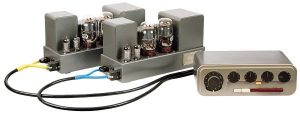
It was back in the late 70s when I built my own electric guitar as a project in school. I was telling my uncle Bill all about it, and about electric guitars in general. This included me banging on about how guitarists preferred to use valve amplifiers because they sounded better. A few days later Bill turned up at our house with one of these.
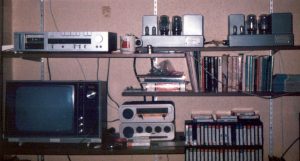
At the time I didn’t have a clue what it was he had given me (pre-internet). Fortunately, I figured out that it was a domestic audio system, so I set about cleaning it up and connecting my AKAI HX1 tape deck. It didn’t work very well. I didn’t have a clue what all the fancy switches did, and besides, some of them were missing.
I wrote to Quad. By return I got a marvelous 3 page personally typed response which talked me through what to check, twiddle, and change to get it working. It went down to the detail of which part numbers were likely need replacing. I also received a full set of user manuals and circuit diagrams. As if that wasn’t enough he also included half a dozen push button caps in different colours so I could restore it to cosmetic brilliance. The instructions were particularly useful for using the comprehensive filters when I later connected a cheap turntable.
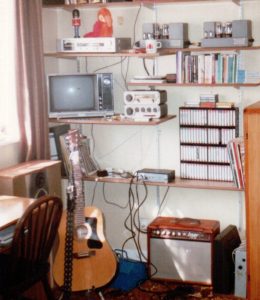
Uncle Bill also gave me a huge pair of speakers. These were really tatty and stood about 3ft off the ground and 2ft wide. One can just be seen on the left of the picture, behind the desk and guitar. They were only about 6 inches deep. Made of plywood they had a pair of drivers. a small tweeter and a mid-range cone. The latter was elliptical, about 8 inches by 3. Behind the mid-range cone, the enclosure had a series of baffles which created a horn which opened up as one side of the cabinet. It should come as no surprise to you that these delivered awesome bass, even with the poultry 15 per channel of the QUAD II. Fitting new tweeters sorted out the highs and I re-covered one with a simple frame and black grill cloth. It’s a shame no photos survive, because it looked great! The other never got done because funds ran out. I was just about to go to university to study electronics.
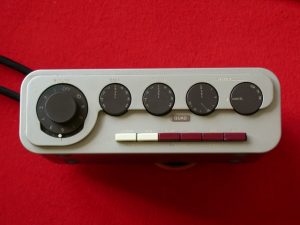
After graduating I had another go at making it work better. This time I was armed with a degree in electronics, which taught me nothing about valves, and a set of Royal Navy electronics training manuals gifted by a girlfriend’s father, which taught me loads. A few valve and cap changes made all the difference and the system saw several years of active service as my main, and very coveted HiFi system.
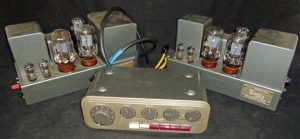
Quad II Mono Blocks and 22 Controller
By the late 80’s I was looking for a job change and noticed that Quad were hiring. They were looking for someone with a grasp of both analogue and digital electronics to work on their new product ranges. We all know how well that development panned out! I had been working on the latest digital telephone exchanges, so had the right mix of skills. I applied, and got an interview.
I arrived in Huntingdon to be greeted by the man who had written to me years before, so mentioning that in the application was obviously worthwhile. The interview went well, indeed I was invited back for a second interview, but it was the tour which was fascinating.
I was really surprised by how crude everything was compared to the computer aided design environment which I had been used to at Plessey. At Quad they used big drawing boards with the circuit design laid out in coloured tape. One colour was used for copper pattern on the top of the circuit board, a different colour for the pattern on the bottom. That way the designer could see both at once and much larger than real life. The idea is that you get the patterns for making the circuit boards by photographically reducing the designs with a camera. By using filters in the camera, you can make one of the tape colours invisible and just see the design for the other layer. Clever stuff and standard practice back then. What really impressed me though was the camera they used. By day it served as a broom cupboard. A lens was mounted in the door. When photographic reduction was required, the designers would stay back after everyone had gone home and the sun had set. The drawing board would be positioned in the middle of the office, the film taped to the back wall of the broom cupboard, and the biggest box brownie in Britain would do its thing.
Quad are also known for their magnificent electrostatic speakers. I expected to see fancy anechoic chambers. No. they sent electrical pulses to the speakers and measured what they heard with high quality microphones and good oscilloscopes. Anything in the results which was recorded after a couple of ms was ignored in analysis, because that would include echoes off the walls.
I did not attend for the second interview, not because of the crude equipment and method which I describe, which they must have improved on for subsequent developments. It was the isolated location of Huntington. As a northern city boy, I didn’t fancy it. I ended up in Manchester instead.
The Quads were still very temperamental. They really needed a good re build. I didn’t have the time, or any money for that matter, so I sold them in the early 90s.
This is, most definitely, the one that got away.
